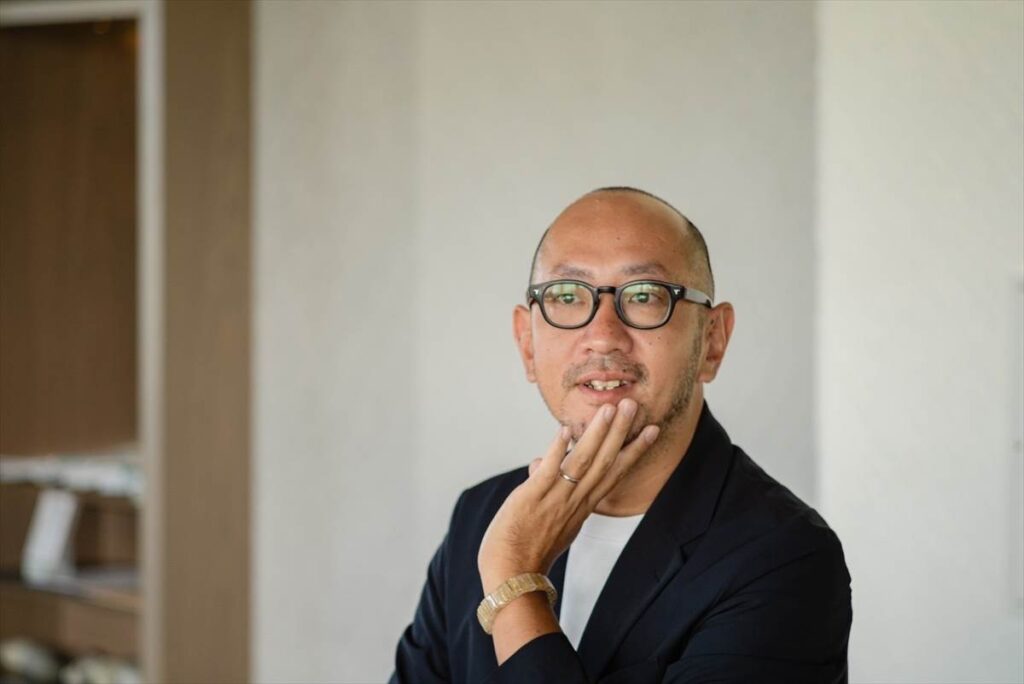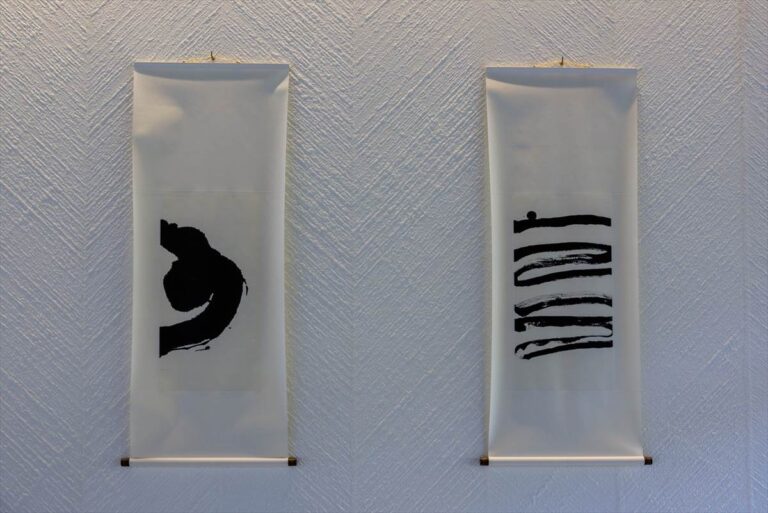philosophy
Within “acoya,” a restaurant nestled in the “ESHIKOTO” complex by Kokuryu Sake Brewery Co., Ltd. in Eiheiji Town, two pieces by Nishiyama Kason grace the walls. The journey from the initial meeting with the owner and client, Mr. Masahumi Hayashi, to the behind-the-scenes of their creation unfolds. Together, they delve into the stories and sentiments woven into these works.
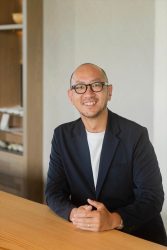
Masashi Hayashi
Born in 1980 in the former Asahi town, Fukui Prefecture
Owner of:
• Ginza Restaurant Air
• Fukui Restaurant cadre
• Fukui Apéro & Pâtisserie acoya
After leaving a foreign financial institution, he opened “Bistro Aida” in Ebisu in 2010, quickly turning it into a restaurant booked out two months in advance. In 2015, he renamed the restaurant to “Restaurant Air” and relocated to Ginza. In 2019, he opened “cadre” in Fukui as a sister restaurant. In 2022, he launched the restaurant “acoya” within the ESHIKOTO complex in Eiheiji Town, Fukui.

Stripping away all that is unnecessary to the utmost. The way of engaging with creations born on a new stage of life.
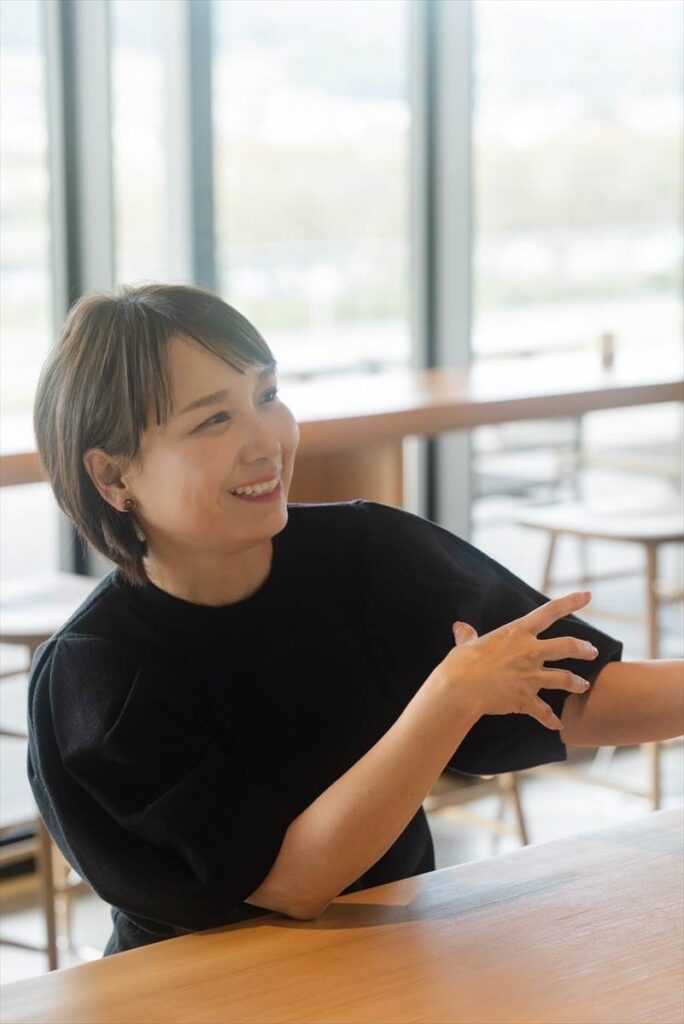
Kason (hereafter referred to as K):
“If I remember correctly, my meeting with Hayashi-san came through an introduction from a friend. When I visited ‘acoya,’ Hayashi-san expressed a desire for me to capture this location in my work, and I agreed without hesitation.
Hayashi(hereafter referred to as H):
“I remember how you immediately said, ‘I’ll do it!’ with eagerness (laughs).
We hadn’t ironed out the details, but my intuition told me, ‘With her, something interesting will surely come out,’ so I asked.
K: At that time (in 2022), I was still recovering from an illness and wasn’t fully back to health, but the desire to create was bubbling up inside me. The thought of having my work displayed in such a beautiful place filled me with joy. The image came to me in a flash.
H: “Initially, I had indeed envisioned something like calligraphy or ink painting, but I was pleasantly surprised and impressed in the best way.”
K: Although Hayashi-san mentioned capturing the ‘location’ in my work, the magnificent scenery was already there before us, and I wondered if there was any need to add more. The first piece was to be displayed on a black wall, so I thought of creating something that would blend into the wall. I asked a friend’s traditional Japanese paper workshop (Yamagishi Washi Shop) to make pitch-black washi paper, and I distilled the essence of mountains, sky, and earth into the simple yet profound symbols: △○□.
H: It truly resonates with the spirit of Zen philosophy, doesn’t it? Perfectly suited for this land (near Eiheiji, the main temple of the Soto school of Zen, located in the heart of Soto Zen Buddhism).Even the black washi paper, I’ve heard, turns white with age.
K: I hope people enjoy the gradual fading of the color, which I believe resonates with the Zen concept that ‘all things are in flux and change.
H: The ○, △, and □ are just a part of it, yet they hint at something much larger beyond the frame. It’s truly cosmic, expanding the imagination.
K: I wanted to express that it doesn’t just end within the frame but invites you to imagine what lies beyond.
H: Did your style change before and after your illness?
K: It changed 180 degrees. Before, I was always concerned about how I and my work were perceived. I placed value on others’ opinions. I was always looking outward for what I wanted to do. But at some point, I felt the need to reset my life and face myself. That’s why, six years ago, I got rid of most of my belongings and went to work at Erinji Temple in Yamanashi, living there.
H: That’s quite a bold move.
K: Once I decide, I act quickly (laughs). I was running a calligraphy class successfully and enjoyed my life in Fukui, but I was looking for the next goal. Life in the temple in Yamanashi wasn’t easy, but I had a valuable experience with the help of those around me. After leaving the temple job, I moved to Kyoto. Then the pandemic hit, and I was at a loss when my work dried up. That’s when I was encouraged by an acquaintance to hold a solo exhibition and managed to get by with some support funds for artists from Kyoto Prefecture (laughs).
H: The developments are quite extreme, aren’t they?
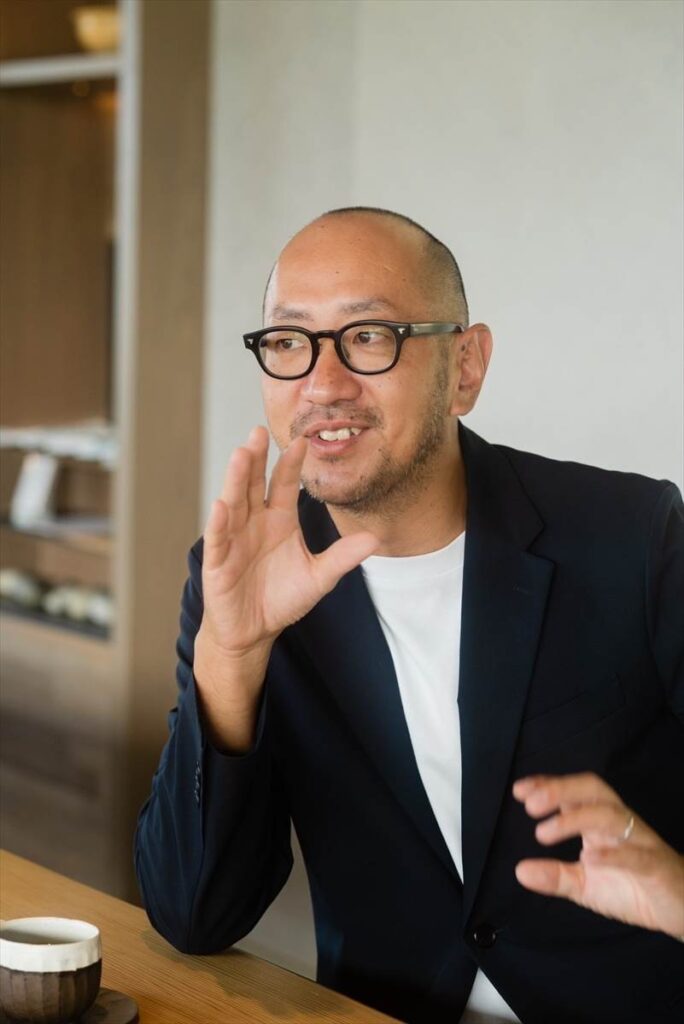
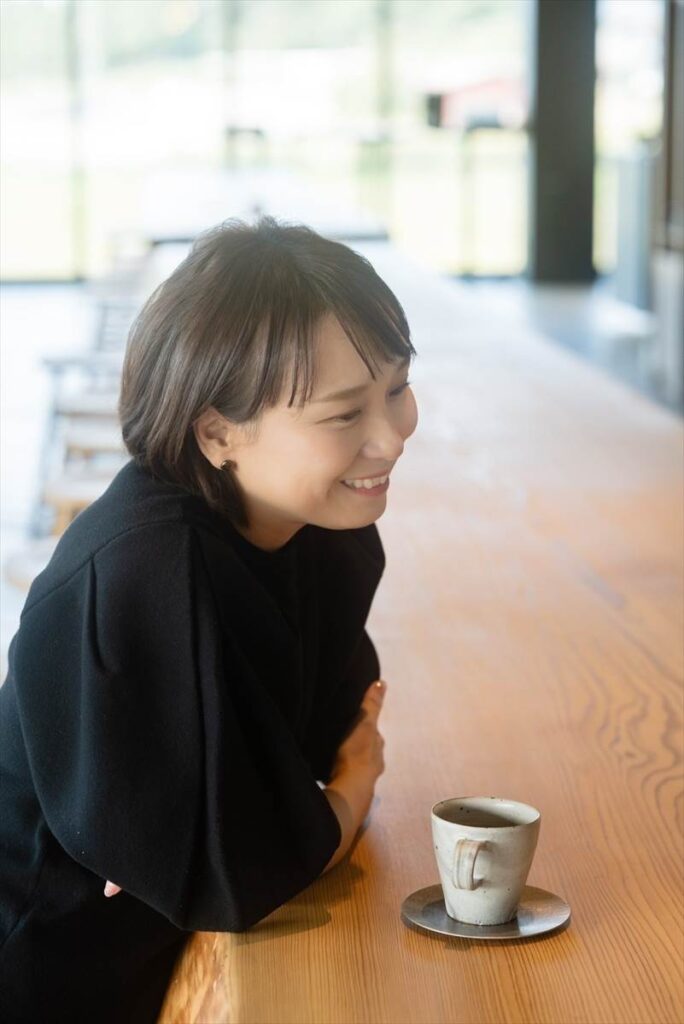
K: Yes, that’s right. I was fortunate to return to the temple in Yamanashi afterward. At the temple, I lived a quiet life, writing Goshuin and sweeping the grounds. However, when I started feeling unwell and went for a check-up, I was diagnosed with cancer and had to undergo surgery and hospitalization immediately. After the surgery, I returned to Fukui for chemotherapy and, for the first time since becoming an adult, I ended up living with my family at my parents’ house.
H: It was fortunate that you could pull through.
K: Indeed. During the days of recuperation at my parents’ home, I realized that everything I had been searching for was within me. The small things in daily life felt precious and brought happiness. I found that what I wanted to do was already inside me, and I didn’t need to look outside for happiness.
H: It’s like starting over from zero, being reborn, in a sense. I’ve also reset my life once, so I can relate to that feeling. I was a salesman at a foreign financial institution in Tokyo, but I decided to quit following the Lehman Shock. With the severance pay, I started my restaurant business, something I really wanted to do.
K: You’re quite decisive too (laughs). It’s entirely different from the finance industry, isn’t it?
H: I had always admired French cuisine. Initially, I opened a restaurant in Ebisu, but it was a series of failures. However, after much trial and error, the business finally took off, and now I manage three restaurants in Tokyo and Fukui. But lately, I find myself losing interest in money.
K: Indeed. Having just what’s necessary is truly enough. I’ve realized, by simplifying my life, that I already possessed everything essential.
H: I shifted towards wanting to do something meaningful, not just something that brings in money.
K: I understand. When you strip away the unnecessary, a work of art transforms from something ‘to be seen’ to something ‘you want to express.’ It allows you to engage with it more purely.

‘Not there’ yet ‘there.’ Fukui’s minimal noise allows for clarity.
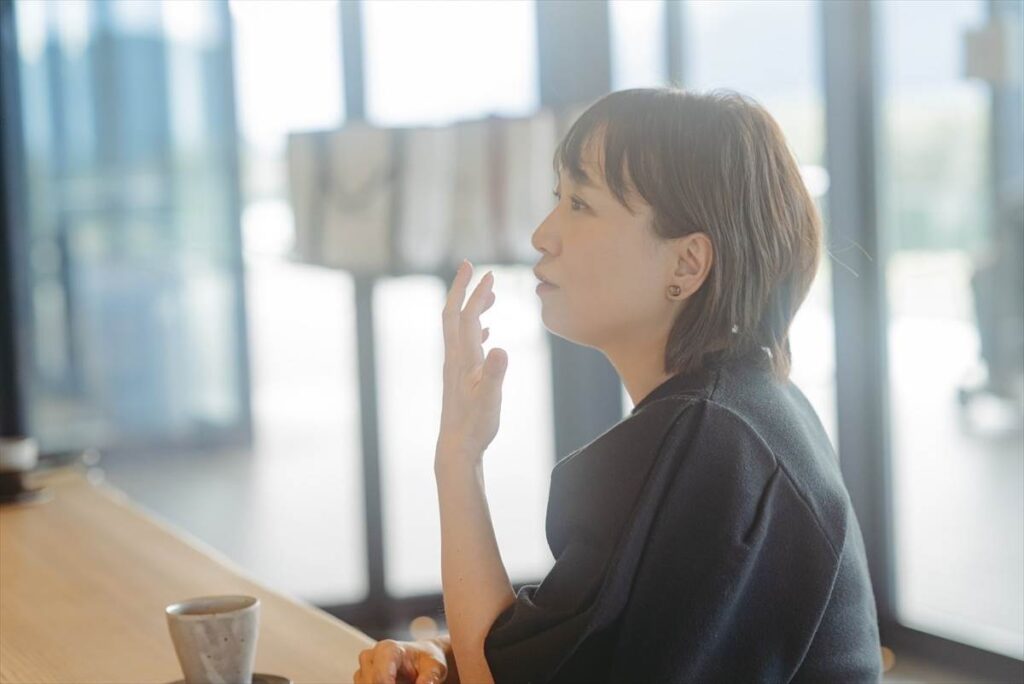
K: Hayashi-san, living between Fukui and Tokyo, how do you feel about Fukui from Tokyo’s perspective?
H: In one word, it’s fantastic. Every time I return, I feel refreshed and happy. Tokyo is full of temptations, with new and appealing things everywhere, events all around, but it can distract you from what you truly need.
K: I also feel that being in Fukui allows me to create. There’s no excess information, so I can always stay grounded. The quiet environment suits me now.
H: Perhaps it’s something you can only feel by having left Fukui once.
K: Indeed. My third piece was also created to convey that even if it’s not visible, everything necessary is right here.
H: The title is ‘aru’ (implying ‘existence’), yet it’s written as ‘Nothingness’ (‘Mu’ in Zen). It’s like the two sides of the same coin, or the meaning is flipped, which is interesting.
K: When creating a piece, I start with a clear theme, but when I’m writing, I think of nothing. The constant challenge is how to erase the ‘I should write this’ that occasionally emerges.
H: This piece has an innocent, child-like stroke.
K: Being told it looks ‘like a child drew it’ is the highest compliment for me. To be straightforward without being contrived.
Moving forward, I want to create works that focus more on simplicity and essence by subtracting the unnecessary.
H: I’m looking forward to seeing how you express the invisible in the future.
text by Yuki Sugimori
photo by Yasuhito Hara
